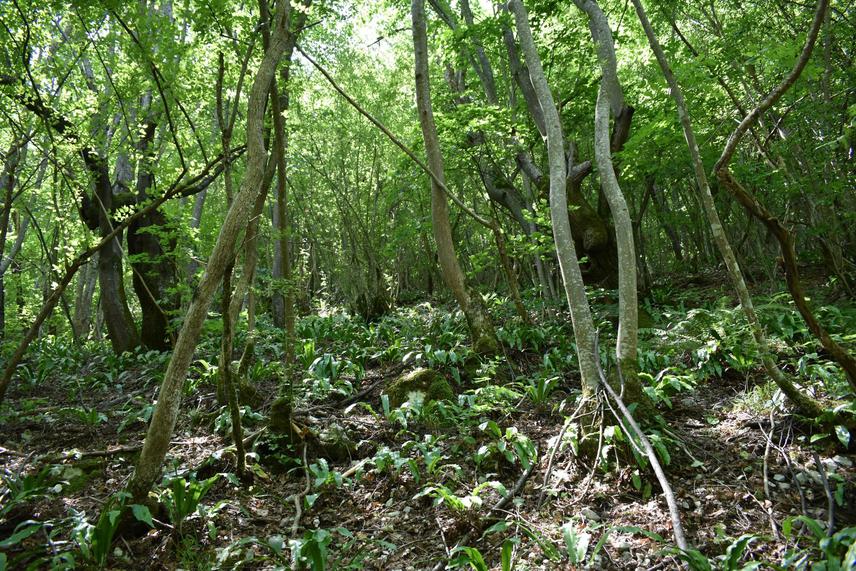Ognjen Lukić
Our project is based on research and promotion of Tilio-Acerion forests of slopes, screes and ravines in the canyons of two tributaires of the Vrbas River (Crna Rijeka and Ugar River). These forests are listed as a priority habitat type in Annex I of EU Habitats Directive. The main reason for this study is insufficient level of exploration of this habitat type, as well as canyon forest vegetation as a whole, in Bosnia and Herzegovina. This project will be the first in Bosnia and Herzegovina which will be dealing with the Tilio-Acerion forests for conservation purposes.

Inside the Tilio-Acerion forests. © O. Lukić.
Bosnia and Herzegovina has a particularly rich biodiversity and diversity of habitats. Currently, canyons of Ugar and Crna Rijeka are included on the List of potential Natura 2000 sites with pSCI status (potential Sites of Community Importance) (Proposal of potential network of Natura 2000 sites in B&H). Habitat of Tilio-Acerion forests of slopes, screes and ravines is recognized as priority type of habitat in Bosnia and Herzegovina following the EU Habitats Directive-Anex I.
Vegetation in canyons is often relict, as canyons are known as glacial refugia, and was not explored into detail until now. The main reason for this study is insufficient level of exploration of this habitat type, as well as canyon forest vegetation as a whole, in Bosnia and Herzegovina. The process of designation of pSCIs for NATURA 2000 in Bosnia and Herzegovina is still at the beginning and collection of recent data on distribution of *9180 Natura habitat type is one of the priorities in this phase. With this project, our goal is give stronger arguments to acquire SCI and afterwards SAC (Special Areas of Conservation).
The knowledge acquired during the project will be used in making of educational programs (workshop presentations, brochure, and catalogue), promotional video and a website about habitats in the canyons of NW Bosnia and Herzegovina that are appropriate and accessible for local and scientific communities. The research data will be used as a field inventory for MSc studies and should be produce solid scientific basis in promoting the conservation status and measures as support for the initiative against the construction of the mini hydroelectric power plants.
In this way, in the future, we can hope that with "high conservation value forest" will be managed better. Also, we expect to raise awareness about ecological importance of Tilio-Acerion forests and the need for their conservation among the local population, NGOs and relevant public sectors which are related to utilisation of natural resources.